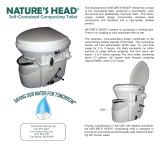
USE & CARE MANUAL: BROMELIAD
Bromeliad plant care is easy and requires no special tools or fertilizers. Feed the plants with a half
strength fertilizer every month in the growing season. Water needs are easily achieved by filling the cup
at the base of the leaves. The water that collects in the pot should be emptied out weekly to remove
debris and the dead insects the stagnant water tends to lure into the cup. Set the pot in a saucer of
gravel filled partially with water to increase humidity and help provide a moist atmosphere. Make sure
the roots are not submerged in the water or this might invite rot. Bromeliads can grow well as “air
plants,” which are glued or nested onto logs, moss or other non-soil organic items. These plants collect
all the food and moisture they need with their leaves but need a little help from you in the indoor
setting.
Bromeliad Life Cycle: When growing a Bromeliad pup, do not label yourself a black thumb if your
bromeliad plant begins to die within a year or two. These epiphytes are not long lived but will generally
start to die back after flowering. Although interior bromeliad plants will fail after a while and cease
growth, they will produce offsets, or pups, that you can be removed and start as new plants. Watch for
pups at the base of the plant and nurture them until they are large enough to break away from the
parent plant. To remove them, cut them away from the parent and then plant them in sphagnum moss
mix or any well-draining medium. Then sadly, it’s off to the compost pile with the original bromeliad
plant, but you will be left with a little carbon copy that you can tend to its full maturity when the cycle
starts all over. These baby bromeliads require the same care as the parent plant. As soon as the pup
forms a cup, it is important to keep it filled with water so the new plant receives adequate moisture.
Growing bromeliads is a rewarding hobby that can continue for years if you harvest the pups.






